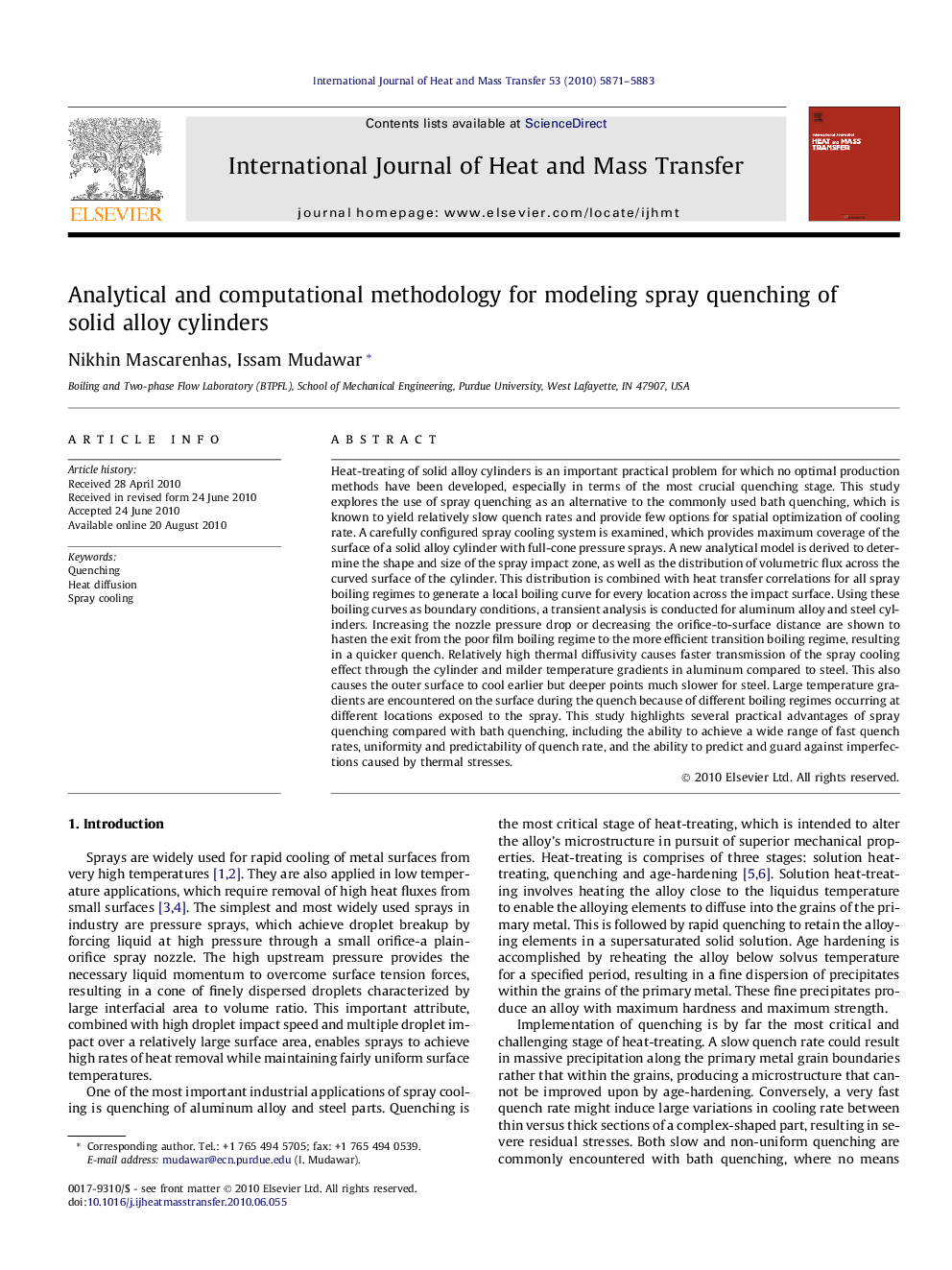| کد مقاله | کد نشریه | سال انتشار | مقاله انگلیسی | نسخه تمام متن |
|---|---|---|---|---|
| 660731 | 1458114 | 2010 | 13 صفحه PDF | دانلود رایگان |

Heat-treating of solid alloy cylinders is an important practical problem for which no optimal production methods have been developed, especially in terms of the most crucial quenching stage. This study explores the use of spray quenching as an alternative to the commonly used bath quenching, which is known to yield relatively slow quench rates and provide few options for spatial optimization of cooling rate. A carefully configured spray cooling system is examined, which provides maximum coverage of the surface of a solid alloy cylinder with full-cone pressure sprays. A new analytical model is derived to determine the shape and size of the spray impact zone, as well as the distribution of volumetric flux across the curved surface of the cylinder. This distribution is combined with heat transfer correlations for all spray boiling regimes to generate a local boiling curve for every location across the impact surface. Using these boiling curves as boundary conditions, a transient analysis is conducted for aluminum alloy and steel cylinders. Increasing the nozzle pressure drop or decreasing the orifice-to-surface distance are shown to hasten the exit from the poor film boiling regime to the more efficient transition boiling regime, resulting in a quicker quench. Relatively high thermal diffusivity causes faster transmission of the spray cooling effect through the cylinder and milder temperature gradients in aluminum compared to steel. This also causes the outer surface to cool earlier but deeper points much slower for steel. Large temperature gradients are encountered on the surface during the quench because of different boiling regimes occurring at different locations exposed to the spray. This study highlights several practical advantages of spray quenching compared with bath quenching, including the ability to achieve a wide range of fast quench rates, uniformity and predictability of quench rate, and the ability to predict and guard against imperfections caused by thermal stresses.
Journal: International Journal of Heat and Mass Transfer - Volume 53, Issues 25–26, December 2010, Pages 5871–5883